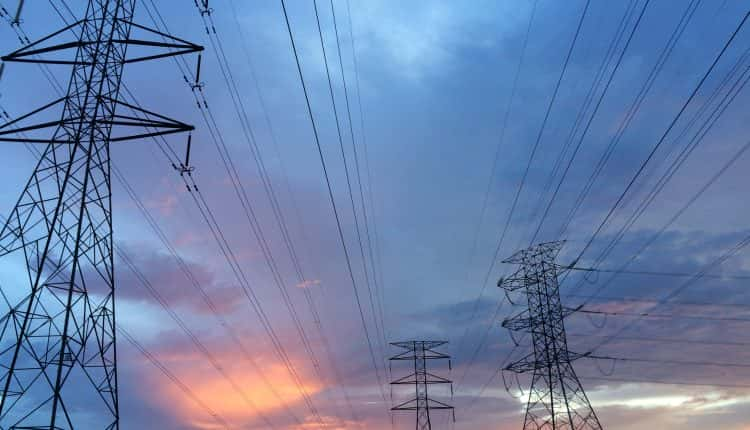
As the global electricity market undergoes transformative changes driven by technological advancements and escalating consumer demand, the sector’s value is poised to reach new heights.
Currently valued at over $1.94 trillion, the market is projected to soar to $3.9 trillion by 2032, boasting a Compound Annual Growth Rate (CAGR) of 8.04%, according to Precedence Research.
Global Electricity Market
This surge is attributed to the rising global demand for electricity, which is anticipated to experience a 3.3% year-on-year increase by 2024, fueled by population growth and economic development.
As the industrial, residential, and commercial sectors emerge as primary consumers, there is a growing need for advanced electricity supply chains and a focus on self-sufficiency in electricity generation and distribution.
The cost of electricity varies across countries, influenced by factors such as geographical location, natural resource availability, and technological development.
Countries endowed with abundant natural resources like hydroelectric, solar, or wind power tend to enjoy more affordable electricity rates.
Among the nations with the cheapest electricity costs are those that strategically leverage their available resources to establish cost-effective and sustainable energy infrastructures.
Read more: Top 5 Must-Visit US Destinations For 2023 Adventurous Travelers
Cheapest Electricity Costs and Their Energy Strategies

1. Nigeria – Electricity Cost: 2.5 Cents per Kilowatt-Hour (kWh)
Nigeria maintains relatively inexpensive electricity costs, primarily due to substantial federal government subsidies.
The country relies heavily on thermal and hydropower sources, with about 86% of its electricity generated from fossil fuels, especially gas.
However, despite having 23 power-generating plants with a capacity of 19,396 MW, Nigeria faces challenges in meeting the demands of its households and businesses, resulting in a low per capita electricity consumption.
2. Zambia – Electricity Cost: 2.4 Cents per Kilowatt-Hour (kWh)
Zambia secures a position among countries with the cheapest electricity costs, thanks to significant investments in hydroelectric power.
The country’s geographical features, including rivers like the Zambezi, Kafue, and Luangwa, provide an ideal setting for hydroelectric power generation.
Critical facilities like the Kariba Dam and Kafue Gorge Upper Power Station contribute to Zambia’s hydro-powered electricity generation, known for its cost-effectiveness and efficient distribution through the Southern African Power Pool.
3. Uzbekistan – Electricity Cost: 2.4 Cents per Kilowatt-Hour (kWh)
Uzbekistan’s electricity generation relies on its substantial natural gas reserves, with approximately 85% of the country’s electricity fueled by domestic gas supplies. A recent agreement with Russia’s Gazprom ensures a daily supply of 9 million cubic meters of gas, contributing to lower electricity costs compared to nations dependent on imported fuels.
4. Suriname – Electricity Cost: 1.6 Cents per Kilowatt-Hour (kWh)
Situated in South America, Suriname harnesses its tropical climate and abundant rainfall for hydroelectric power generation. The Brokopondo Reservoir, a key component of Suriname’s energy infrastructure, powers the Afobaka Hydroelectric Plant, offering cost-effective electricity due to low operational expenses and absence of fuel requirements.
5. Iraq – Electricity Cost: 1.5 Cents per Kilowatt-Hour (kWh)
With substantial oil reserves, Iraq benefits from lower electricity generation costs subsidized by revenue from oil sales. The country’s thermal power plants primarily use oil as a fuel source, and historically, the government has maintained low electricity prices as part of social welfare initiatives.
6. Zimbabwe – Electricity Cost: 1.5 Cents per Kilowatt-Hour (kWh)
Zimbabwe’s investment in hydroelectric power, particularly the Kariba Dam, contributes to affordable electricity costs. The country, aiming to double its electricity output by 2025, faces challenges in balancing supply and demand due to water shortages and infrastructural constraints.
7. Bhutan – Electricity Cost: 1.5 Cents per Kilowatt-Hour (kWh)
Bhutan’s mountainous terrain and abundant rivers make it an ideal location for hydroelectric power plants. The country not only produces surplus electricity but also exports about 75.5% of it, primarily to India, contributing to revenue that subsidizes domestic electricity costs. Bhutan’s commitment to environmental conservation aligns with its focus on hydropower.
8. Angola – Electricity Cost: 1.4 Cents per Kilowatt-Hour (kWh)
Situated on the Western Atlantic coast, Angola benefits from abundant hydrological resources. Major hydroelectric projects, including the Laúca and Cambambe dams, significantly contribute to Angola’s power generation capacity, offering sustainable and low-cost energy.
9. Kyrgyzstan – Electricity Cost: 1 Cent per Kilowatt-Hour (kWh)
Kyrgyzstan’s abundant water resources, particularly from the Naryn River, support several major hydroelectric stations. The country’s established electricity infrastructure, coupled with recent collaborations with renewable energy companies, positions Kyrgyzstan as a leader in clean energy production.
10. Argentina Electricity Cost in Cents per Kilowatt-Hour (kWh): 2.5
Argentina’s low electricity prices are mostly attributable to the significant contribution of hydroelectric power to the country’s energy mix. The nation’s hydroelectric power generation surged in 2023, reaching its highest monthly total in more than five years in September. The main cause of this surge was the high water levels in important river basins caused by the significant rains that fell throughout the southern hemisphere winter.
The list of countries with the cheapest electricity costs showcases the diverse strategies nations employ to capitalize on their natural resources and technological capabilities.
As the global electricity market continues to evolve, these examples provide valuable insights into the importance of sustainable and cost-effective energy solutions.
With the demand for electricity set to rise, these countries serve as models for achieving affordability while maintaining a focus on environmental sustainability and energy self-sufficiency.
Read more: Top 5 Dangerous Places In Georgia

